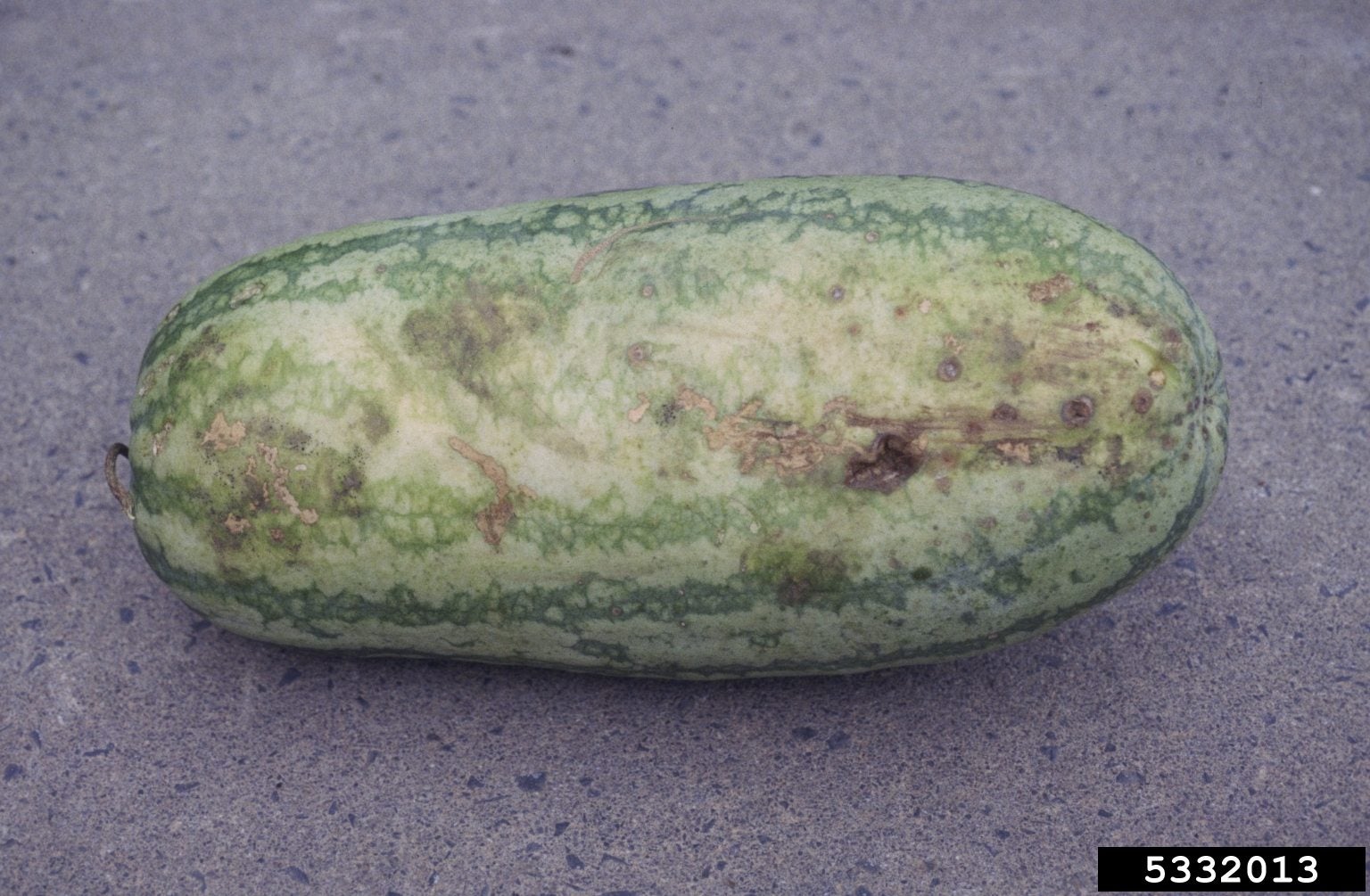Watermelon Anthracnose Info: How To Control Watermelon Anthracnose


Anthracnose is a destructive fungal disease that can cause serious problems in cucurbits, particularly in watermelon crops. If it gets out of hand, the disease can be very damaging and result in the loss of fruit or even vine death. Keep reading to learn more about how to control watermelon anthracnose.
Watermelon Anthracnose Info
Anthracnose is a disease caused by the fungus Colletotrichum. Symptoms of watermelon anthracnose can vary and affect any or all aboveground parts of the plant. This can include small yellow spots on leaves that spread and darken to black. If the weather is damp, fungal spores will be visible as pink or orange clusters in the middle of these spots. If the weather is dry, the spores will be gray. If the spots spread too far, the leaves will die. These spots can also appear as stem lesions. Additionally, the spots can spread to the fruit, where they appear as sunken, wet patches that turn from pink to black with time. Small infected fruit may die.
How to Control Watermelon Anthracnose
Anthracnose of watermelons thrives and spreads most easily in moist, warm conditions. The fungal spores can be carried in seeds. It can also overwinter in infected cucurbit material. Because of this, diseased watermelon vines should be removed and destroyed and not allowed to remain in the garden. A large part of treating watermelon anthracnose involves prevention. Plant certified disease free seed, and rotate watermelon plantings with non-cucurbits every three years. It’s also a good idea to apply preventative fungicide to existent vines. Fungicides should be sprayed every 7 to 10 days as soon as the plants begin to spread. If the weather is dry, the spraying can be reduced to once every 14 days. It’s possible for the disease to infect harvested fruit through wounds, so make sure to handle watermelons carefully when picking and storing them to prevent damage.
Sign up for the Gardening Know How newsletter today and receive a free copy of our e-book "How to Grow Delicious Tomatoes".

The only child of a horticulturist and an English teacher, Liz Baessler was destined to become a gardening editor. She has been with Gardening Know how since 2015, and a Senior Editor since 2020. She holds a BA in English from Brandeis University and an MA in English from the University of Geneva, Switzerland. After years of gardening in containers and community garden plots, she finally has a backyard of her own, which she is systematically filling with vegetables and flowers.